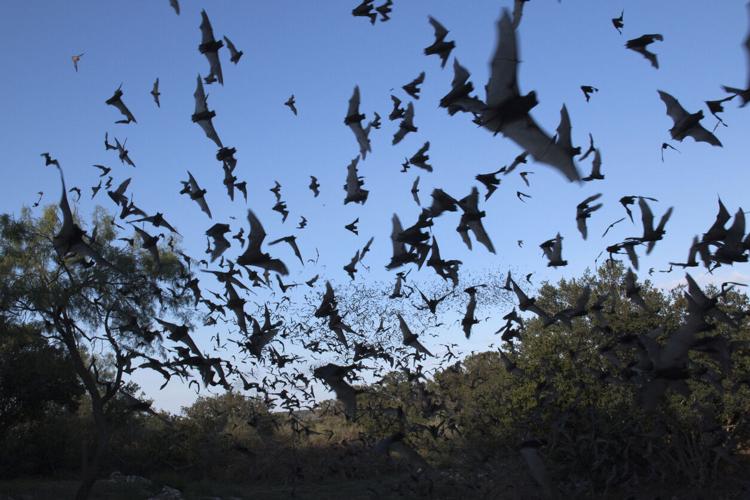National Bat Week is celebrated in the last week of October each year with the purpose being to raise awareness for the need for bat conservation. Many bat species are protected by both federal and state law.
Eighteen species of bats live in Colorado, and they all play an important role in the ecosystem. Bats help keep our ecosystem healthy by eating insects, pollinating plants and crops, and by helping to spread seeds. Bats live in every habitat in Colorado, with some calling the state home year-round while others migrate to and from the region.
Here are a few of the state's unique bat species, as highlighted by Colorado Parks and Wildlife:
The Canyon Bat
The Canyon Bat, which is the smallest of Colorado's bats, lives at lower elevations on the Western Slope and in canyons in the southeast. They are usually found in arid canyonlands or dry shrub lands near water. Canyon bats can weigh as little as one penny.
Townsend's Big-Eared Bat
Townsend's Big-Eared Bat, aptly named for their ears that reach 1.5 inches, can be found in mines, caves, and large rock cavities. These bats are also known for creating maternity roosts during breeding season, which can sometimes have numbers climbing into the hundreds.
The Big Brown Bat
The Big Brown Bat is the most commonly encountered bat in Colorado. They live in Colorado year-round and hibernate in many places throughout the state, such as rock crevices, mines, and caves.

A biologist checks the wings of a Big Brown Bat for signs of White-nose Syndrome. File photo. Photo Credit: JasonOndreika (iStock).
The Big Free-Tailed Bat
The Big Free-Tailed Bat was once thought to merely pass through Colorado. That being said, recent data indicates that the bats have breeding colonies in Western Colorado.
Bat Safety and Preservation:
While bats have long been feared thanks to horror movies and fairy tales, bats tend to be harmless and serve an important role in the ecosystems in which they are found. Bats are excellent at aerial hunting, with some species able to catch up to 1,000 bugs in a single hour. In general, the best safety advice when it comes to bats is to simply ignore them and they'll leave humans alone. It's also worth noting that bats can be carriers of rabies, making it also important to avoid touching them and to contact a wildlife expert if they are found in an enclosed human space.
In recent years, a condition known as 'white nose syndrome' has become problematic among bats, ultimately resulting in death. Learn more about white nose syndrome and how you can help stop its spread here.
STAY INFORMED: Get free Colorado news with our daily newsletter (Click here)









(0) comments
Welcome to the discussion.
Log In
Keep it Clean. Please avoid obscene, vulgar, lewd, racist or sexually-oriented language.
PLEASE TURN OFF YOUR CAPS LOCK.
Don't Threaten. Threats of harming another person will not be tolerated.
Be Truthful. Don't knowingly lie about anyone or anything.
Be Nice. No racism, sexism or any sort of -ism that is degrading to another person.
Be Proactive. Use the 'Report' link on each comment to let us know of abusive posts.
Share with Us. We'd love to hear eyewitness accounts, the history behind an article.